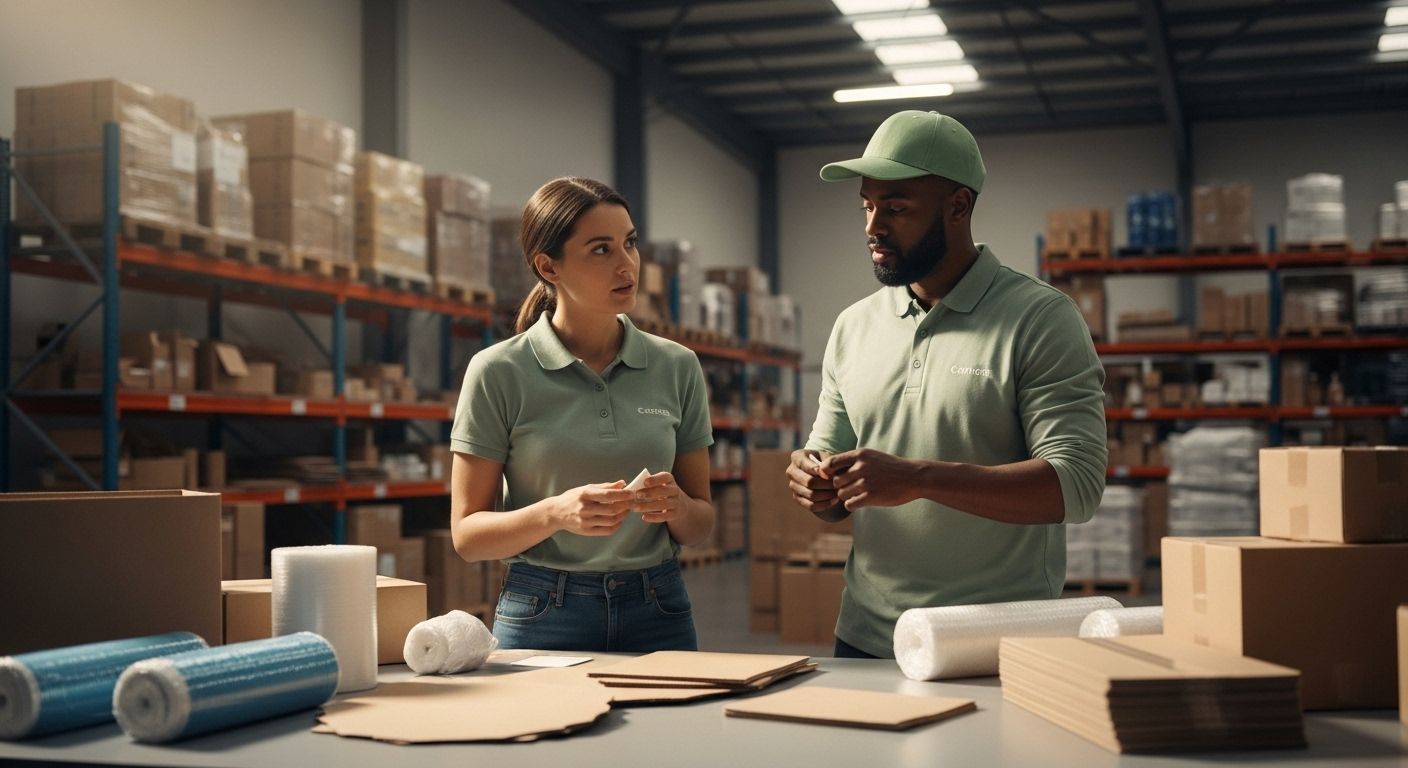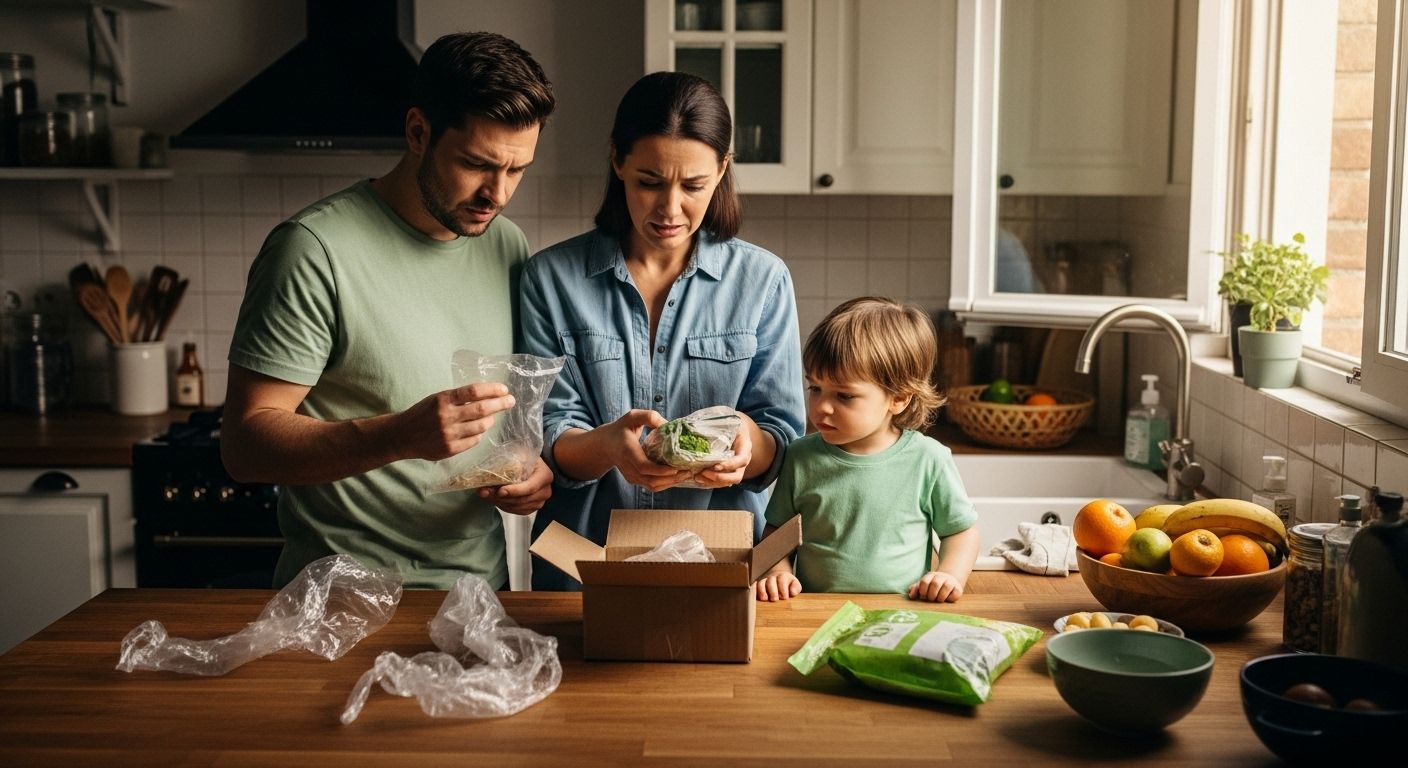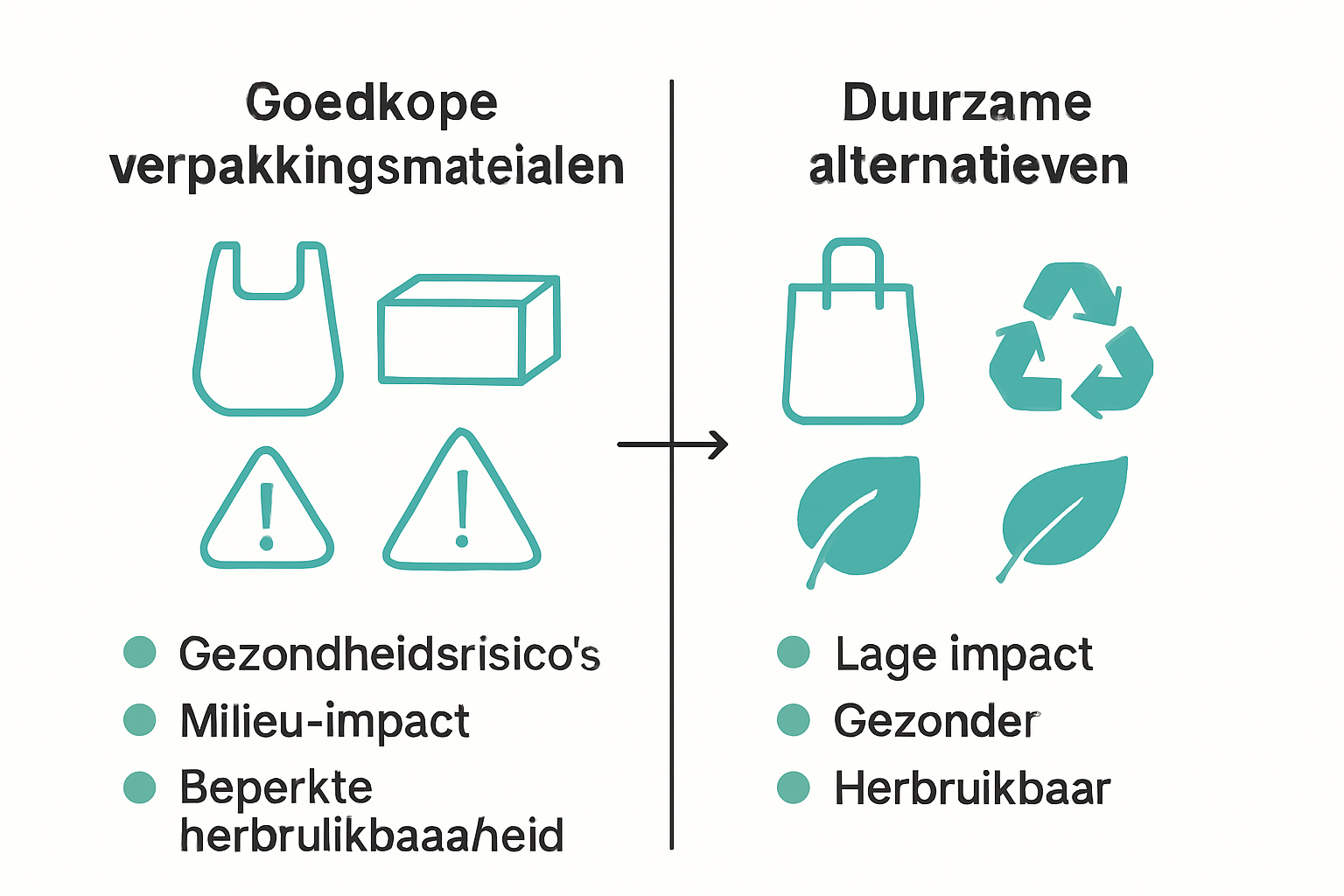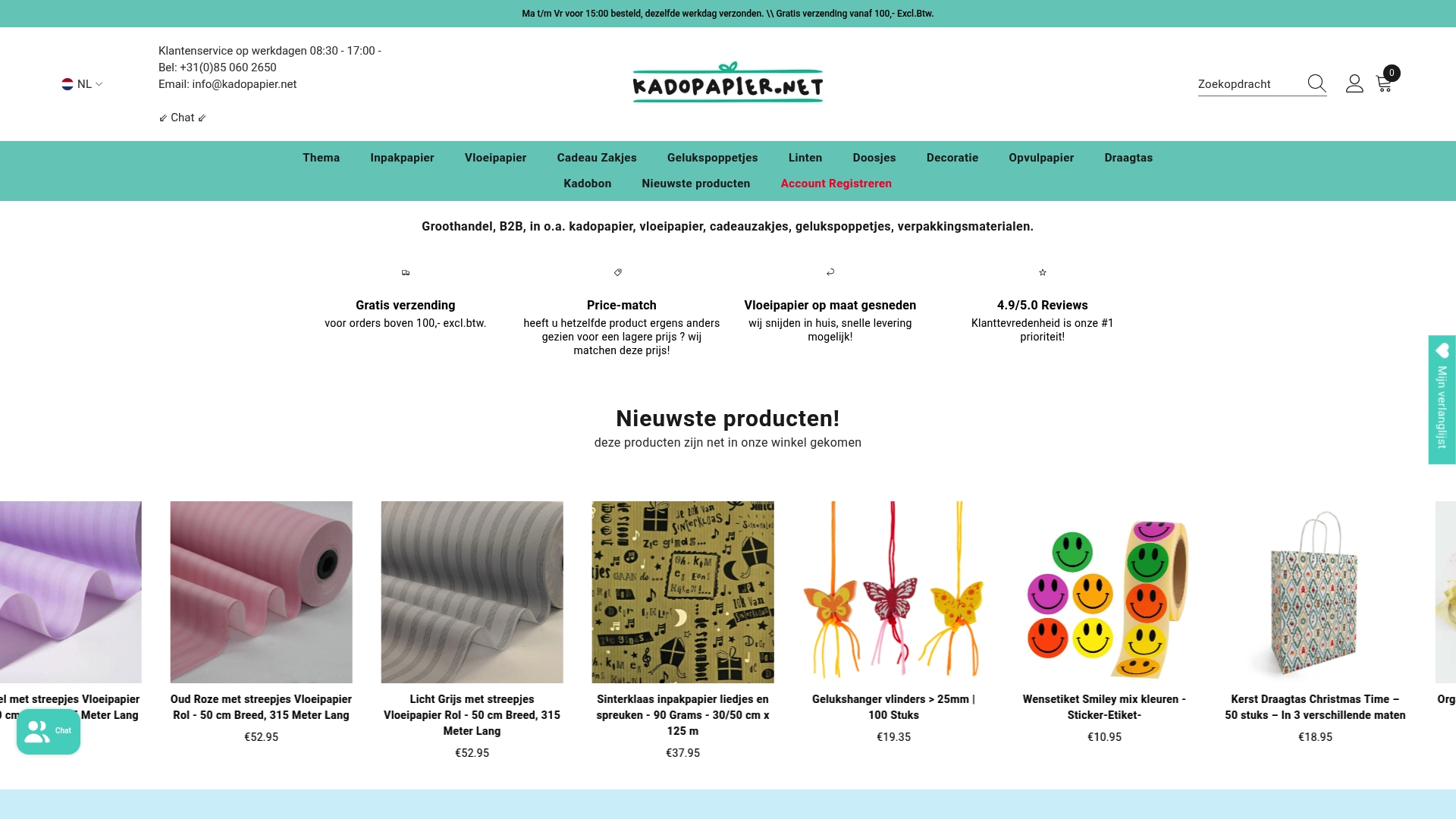Risks of cheap packaging materials explained clearly

Cheap packaging materials are everywhere in stores and online shops. They seem like a smart choice, since more than 40 percent of all packaging worldwide is made of cheap plastic or cardboard . Surprisingly, that low price often carries more risk than benefit. What if these cheap solutions pose a threat to your health and the environment?
Table of contents
- What are cheap packaging materials?
- Why are the risks of cheap packaging materials important?
- How do cheap packaging materials work in practice?
- What are the consequences of cheap packaging materials for health and the environment?
- What alternatives are there to cheap packaging materials?
Quick Summary
| Takeaway | Explanation |
|---|---|
| Choose cheap packaging carefully | Cheap materials can pose health risks and environmental impacts. |
| Beware of harmful chemicals | Cheap packaging often contains hormone disruptive substances and heavy metals. |
| Explore sustainable alternatives | There are eco-friendly options such as biodegradable and recycled materials. |
| Prioritize quality over costs | The hidden costs of cheap packaging materials can be greater in the long run. |
| Evaluate the effects on health and the environment | Cheap packaging materials have a major impact on health and the planet. |
What are cheap packaging materials?
Cheap packaging materials are products used to package, protect, and transport goods at minimal cost. These materials are often made from inexpensive raw materials such as recycled plastic, thin cardboard, or cheap plastics.
Types of Cheap Packaging Materials
There are several categories of low-cost packaging materials that are widely used in different sectors:
- Plastic bags : Light and inexpensive, ideal for smaller products
- Recycled cardboard : Environmentally friendly and very affordable
- Cheap plastic films : Flexible and suitable for various packaging purposes
Risks of Cheap Packaging Materials
While these materials are cost-effective, they carry significant risks. Health research shows that inexpensive packaging materials can contain harmful chemicals such as:
- Phthalates that can have a hormone disrupting effect
- Heavy metals that are toxic to the human body
- Chemical additives that pose potential health risks
Choosing alternative packaging materials can significantly reduce these risks.
When selecting inexpensive packaging materials, it is essential to consider not only price but also quality, safety, and potential long-term impact on people and the environment.
Why are the risks of cheap packaging materials important?
The risks of cheap packaging materials are crucial because they have direct consequences for health, the environment, and economic sustainability. These materials may seem attractive at first glance due to their low cost, but they conceal potentially harmful aspects that can have far-reaching consequences.
Health Risks for Consumers
Cheap packaging materials can pose serious health risks due to the presence of harmful chemicals. Environmental impact research shows that these materials contain chemicals that can leach into food and beverages, potentially leading to:
- Hormonal disturbances
- Possible increase in cancer risk
- Disruption of the immune system
- Potential developmental delays in children
Environment and Sustainability Impact
The production and disposal of cheap packaging materials pose a significant threat to the environment. Our guide to smart packaging choices emphasizes that these materials:
- Contributing to increasing plastic pollution
- Be difficult to break down
- Seriously disrupting ecosystems and animal habitats
- Large amounts of fossil fuels are required for production
The economic and environmental costs of these inexpensive materials often outweigh the initial savings. Businesses and consumers should be aware of the hidden consequences of choosing the cheapest packaging solutions.
The overview below provides a comparison between inexpensive packaging materials and sustainable alternatives, so you can quickly see the differences in properties, risks, and environmental impacts.
| Feature | Cheap packaging | Sustainable alternatives |
|---|---|---|
| Raw material use | Recycled plastic, thin cardboard | Renewable, organic materials |
| Costs | Low | Higher in the short term |
| Health risks | Present (chemicals, metals) | Low to no risks |
| Protection of goods | Limited | Improved or equivalent |
| Environmental impact | High pollution, poorly biodegradable | Low impact, often compostable |
| Reusability | Limited | Often reusable or recyclable |
| Long-term production costs | Hidden environmental costs | Fewer hidden costs |
How do cheap packaging materials work in practice?
Inexpensive packaging materials serve as basic protection and transportation solutions with minimal production costs. They are designed to temporarily protect, package, and transport goods at the lowest possible cost for manufacturers and end users.
Production Process and Properties
The manufacturing of these materials is focused on cost-efficiency and rapid production. Our packaging solutions guide illustrates that these materials are typically produced by:
- Use of recycled or cheap raw materials
- Minimum quality controls
- Automated production processes
- Application of cheap chemical additives
Practical Application and Use Cycle
Environmental impact research reveals the practical life cycle of these packaging materials:
- Fast production at low costs
- Short lifespan
- Minimum protection of products
- Limited reusability
However, the economic attractiveness of inexpensive packaging materials is overshadowed by their potentially harmful environmental and health effects. Alternative packaging materials are increasingly offering more sustainable solutions for companies that want to conduct business responsibly.
What are the consequences of cheap packaging materials for health and the environment?
Cheap packaging materials pose a serious threat to both human health and global ecosystems. The far-reaching consequences go beyond the superficial economic benefits and affect fundamental aspects of our environment.
Health Risks of Long-Term Exposure
Health impact research reveals the harmful consequences of chemical migration from cheap packaging materials:
- Increased risk of hormonal disruptions
- Possible increase in cancer risk
- Weakening of the immune system
- Potential developmental delays in children
Environmental Impact and Ecosystem Disruption
Biodegradable alternatives are becoming increasingly important given the enormous ecological impact of cheap packaging materials. These environmental consequences include:
- Accumulation of microplastics in oceans
- Pollution of groundwater and soil ecosystems
- Disturbance of animal habitats
- Increased carbon emissions during production
The consequences of these cheap materials far exceed the initial cost savings.
Here's an overview of the types of health and environmental risks associated with cheap packaging materials, sorted by risk type and associated consequences.
| Risk type | Description | Possible consequences |
|---|---|---|
| Health | Chemical migration of phthalates, metals, additives | Hormonal disruption, cancer, reduced immunity, developmental problems |
| Environment | Difficult to degrade, microplastics, fossil fuel use | Pollution, ecosystem disruption, CO2 emissions |
| Long-term exposure | Accumulation of harmful substances in the body | Chronic illness, delayed development in children |

What alternatives are there to cheap packaging materials?
With increasing awareness of environmental and health risks, more and more sustainable and safe alternatives to traditional, inexpensive packaging materials are becoming available. These innovative solutions offer not only environmental benefits but also improved product quality and safety.
Sustainable Material Solutions
Research into packaging innovations reveals several promising alternatives:
- Biodegradable polymers
- Paper and cardboard from renewable sources
- Plant-based packaging materials
- Reusable packaging systems
Practical Eco-Friendly Options
Our guide to alternative packaging materials offers concrete suggestions for businesses and consumers:
- Kraft bags : Environmentally friendly and fully recyclable
- Packaging made from recycled materials
- Packaging made from organic raw materials
- Compostable materials
The advantages of kraft bags perfectly illustrate how alternative materials are not only sustainable but also stylish and functional. Through conscious material choices, we can achieve significant environmental and health benefits.

Choose safe and sustainable packaging solutions at Kadopapier.net
It's perfectly normal to be concerned about the risks of cheap packaging materials. You've read that harmful chemicals can cause health problems and that the environment suffers as a result. Don't want to compromise on safety or appearance? Then choose responsible and stylish alternatives for your packaging. At Kadopapier.net , you'll find a wide range of options, including kraft bags, recyclable wrapping paper, and eco-friendly gift ribbons . This way, you can make a conscious choice without compromise.

Set a good example today and switch to sustainable and safe packaging with peace of mind. Discover the full range at Kadopapier.net now and improve your presentation and impact.
Frequently Asked Questions
What are cheap packaging materials?
Inexpensive packaging materials are products used to wrap and protect goods at a low cost, often made from cheaper raw materials such as recycled plastic and thin cardboard.
What are the health risks of cheap packaging materials?
Cheap packaging materials can contain harmful chemicals that can migrate into food, leading to hormonal disruptions, increased cancer risk, and other health problems.
How do cheap packaging materials affect the environment?
The production and disposal of cheap packaging materials contributes to plastic pollution, disrupts ecosystems, and requires large amounts of fossil fuels, which is harmful to the environment.
What alternatives are there to cheap packaging materials?
Sustainable alternatives include biodegradable polymers, packaging made from renewable materials, and compostable and reusable packaging systems.
